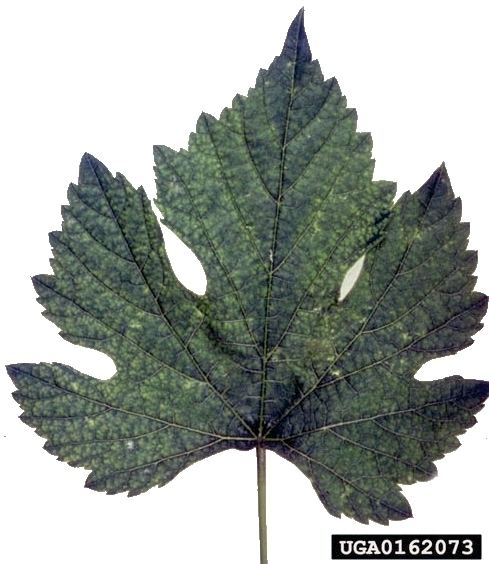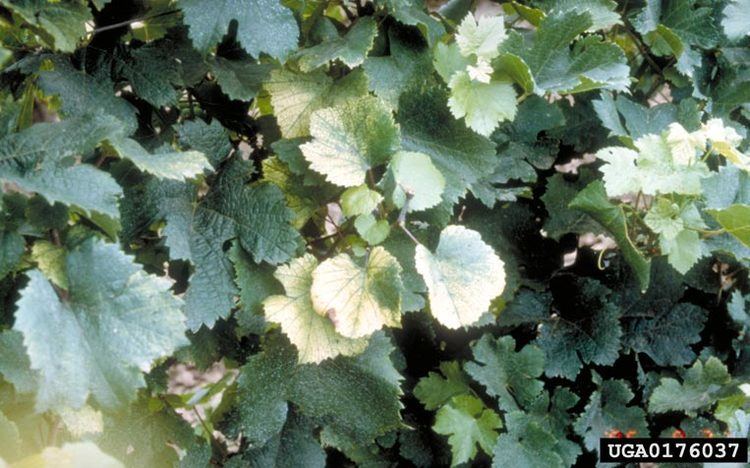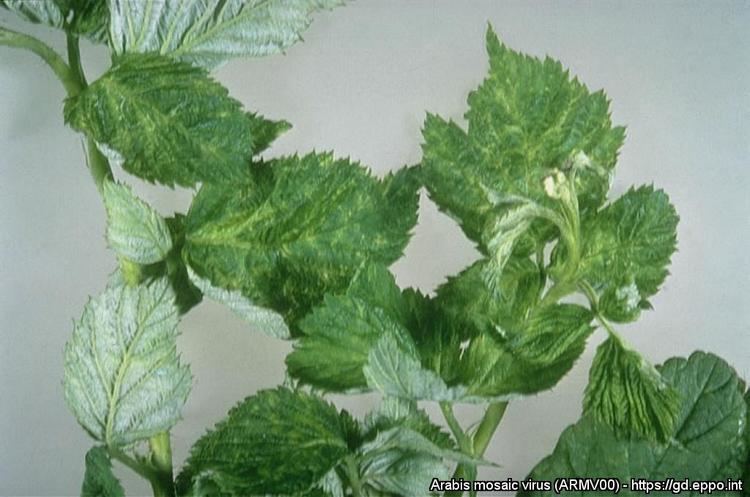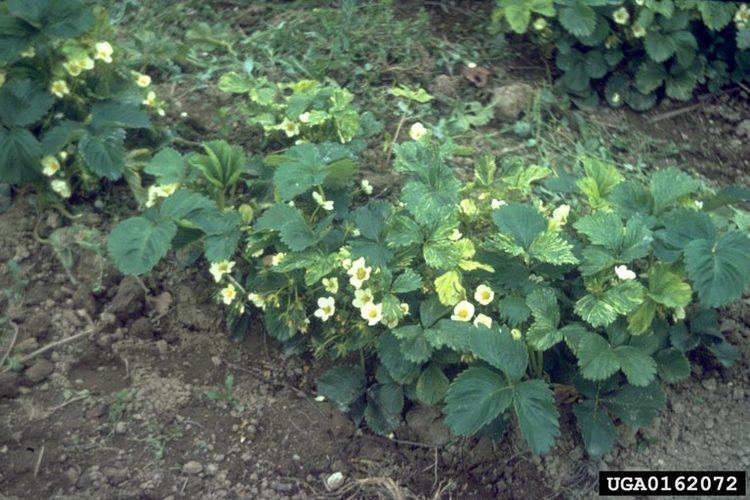Group Group IV ((+)ssRNA) | Subfamily Comovirinae Rank Species | |
 | ||
Similar Nepovirus, Grapevine fanleaf virus, Tomato black ring virus, Raspberry ringspot virus, Tomato ringspot virus | ||
Arabis mosaic virus is a viral plant pathogen that is known to infect multiple hosts. The pathogen, commonly referred to as ArMV, is from the Secoviridae family, and it causes Raspberry yellow dwarf virus and Rhubarb mosaic virus. The Arabis Mosaic Virus infects multiple hosts, including strawberries, hop, hemp, grape and geraniums, raspberries, sugarbeets, celery, horseradish, lilac, peach and lettuces.
Contents

Symptoms

While it is common for the hosts not to show any symptoms of the pathogens influence, there are some symptoms that can occur in the hosts. The most prevalent symptoms of the ArMV are stunting of the plant and leaf flecking/molting and leaf enations. The symptoms will vary based on the type of rootstock, environmental conditions and variety.
Disease Cycle

This virus is transmitted mainly through the soil by nematodes, but it can also be transmitted through the use of arthropods (such as insects), and through seed and pollen transmission. Nepoviruses, viruses that serve as natural hosts, are transmitted through three different species of nematodes, they are: Xiphinema, Longidorus and Paralongidorus. For the Arabis Mosaic Virus, the Xiphinema diversicaudatum is the most common nematode vector. In this cycle, females lay their eggs in the spring, which then hatch and the juveniles mature through four different stages (which can be distinguished by body length and functionality of odontostyles) and finally move into adulthood. Nematodes feed on the roots of the infected plants, taking up the virus with them as they do and allowing for the virus to travel between plants. The nematodes can only transmit the virus when they are adults, but once they molt they have to re-uptake the virus from an infected root in order for them to pass it on again.
Management

The best way to control the virus is to use virus-free planting material. The pathogen can only be transmitted through soils where the pathogen already exists and nematodes are present, so when proper hygienic techniques and sterile materials are used the crops will be virus free. It is also important to test the soil where plants where plants had previously been infected to make sure there are no nematodes that are remaining in the soil. These measures are all that is being used so far because nematicides are not able to reduce the nematode presence, as the nematodes are able to reside deep within the soil in the roots of the plants.
